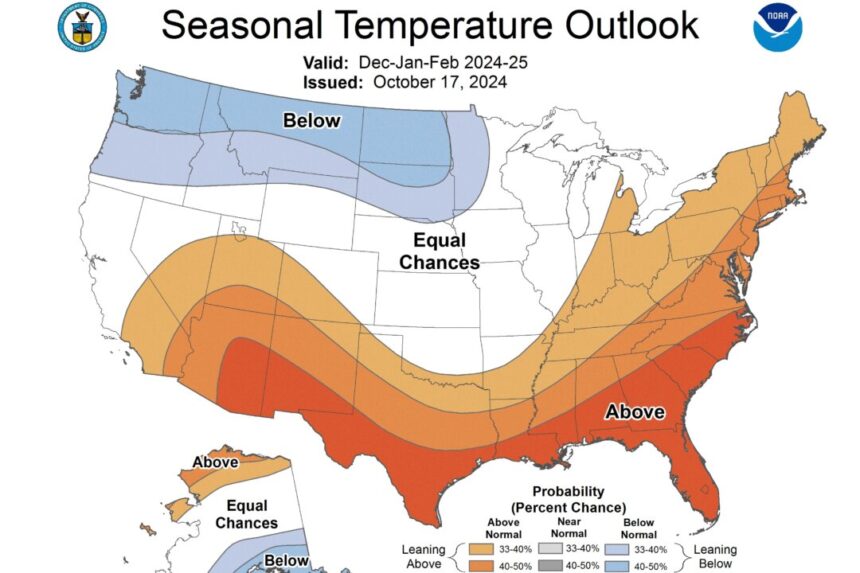The National Oceanic and Atmospheric Administration (NOAA) has indicated a 70 percent likelihood of La Nina developing this winter in its winter outlook report. According to the report released on Oct. 17, most of the United States can expect a warmer and drier winter, with colder and wetter conditions limited to the northern regions. The meteorological winter season spans from December 2024 to February 2025.
NOAA predicts higher-than-normal temperatures for Florida, Texas, and the Gulf Coast, while below-average temperatures are expected in the Pacific Northwest, Northern Rockies, and Northern Plains. The District of Columbia metro area is also forecasted to experience higher-than-normal temperatures.
In terms of precipitation, the Pacific Northwest and Great Lakes regions are anticipated to receive above-average rainfall, with drought-like conditions intensifying in the Gulf Coast, Southwest, and Great Plains. Snowfall is expected to be above average in the Pacific Northwest, northern and central Rockies, Northern California, Great Lakes, and Northern Plains. However, central states like Colorado, Texas, Oklahoma, and Kansas may see less snow.
Coastal cities along the Eastern Seaboard are likely to have higher temperatures, leading to more rain and ice events, while above-average snowfall is expected in the mountains of New England. Looking ahead, the forecast suggests optimism for spring skiing, with below-normal temperatures and above-normal precipitation favored for the Pacific Northwest and northern Rockies during February, March, and April.
NOAA’s outlook for the 2024-25 winter season highlights the influence of a developing La Nina event, which is expected to create less consistent weather conditions across the continent. La Nina, originating in the Pacific Ocean, brings colder waters to the surface and shifts the jet stream northward, resulting in warmer temperatures in the south and colder temperatures in the north.
With a 70 percent chance of La Nina development by November, NOAA acknowledges the challenges of forecasting this winter due to the lack of a strong La Nina compared to the previous year’s El Nino. Despite the lower confidence in the forecast, NOAA emphasizes the potential for variability and changes in weather patterns throughout the season. Please rephrase
Source link






